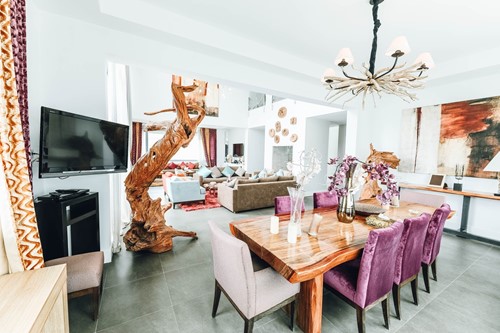
Open concept homes, also called open floor plans, have been a mainstay of home design for decades. There are many reasons this style of architecture is so popular, yet there are also some downsides. If you’re considering an open concept home, here are the major pros and cons to consider:
Open Concept Pros
Better Flow - With a few exceptions, open concept homes don’t have doors separating rooms. Without opening and closing doors—and without the walls they’re built into—it’s far easier to move around the space. Open concept homes drastically improve traffic and airflow.
Shared Light - Another advantage of the lack of walls in an open concept home is that light can travel all the way across the space without obstruction. This means you can take full advantage of natural light from windows. You can also save energy by turning on fewer lights at night.
Multifunctional Spaces - Open concept homes combine the living room, dining room, kitchen and/or family room into one space. Because of this, the divisions of function between rooms don’t exist. You can eat in the living room and work on a laptop in the dining room, all while technically being in the same room.
Open Concept Cons
Expensive to Heat and Cool - Unfortunately, wide open spaces make HVAC systems work extra hard. This translates to much higher utility bills in order to keep the home cool or warm. Unlike a traditional concept home, there’s no way to trap heat or cool air in smaller spaces, which makes open concepts less energy efficient.
Noisy - With more air and traffic flow also comes more noise. Noise can travel easily throughout the space and make it difficult or impossible to get a moment of quiet. If you or anyone in your house is working or learning from home, this can make concentration especially difficult.
Difficult to Decorate - More space does not necessarily mean more freedom. Many homeowners find decorating and arranging open concept homes more difficult because of the lack of definition between spaces. Fewer walls and built-in pathways can lead to furniture and decor clumped up against the outer walls, leaving the inside of the space empty. While not the case for everyone, an open concept home can be tricky to decorate.
New homes frequently come with open concept floor plans. However, the traditional style of layout is gradually coming back into style as people spend more time at home. If you’re considering an open concept home, weigh the pros and cons carefully to determine if it’s the right option for you.
About the Author

